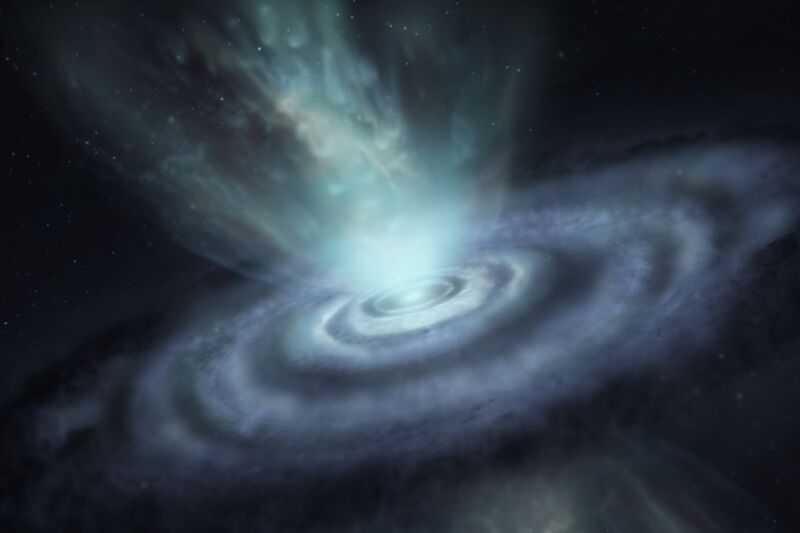A cosmic mystery: Astronomers capture dying star blowing smoke rings

Enlarge / A rendering of the star V Hydrae, or V Hya for short. In its death throes, the star emitted a series of expanding rings that scientists calculated are being formed every few hundred years, per UCLA astronomer Mark Morris. (credit: ALMA (ESO/NAOJ/NRAO)/S. Dagnello (NRAO/AUI/NSF))
Astronomers have caught a red giant star going through its final death throes in unprecedented detail, revealing an unusual feature. The star, known as V Hydrae (or V Hya for short), ejected six distinct rings of material, according to a preprint accepted for publication in the Astrophysical Journal. The specific mechanism of these mysterious "smoke rings" formed is not yet understood. Still, the observation could potentially shake up current models for this particular late stage of stellar evolution and shed further light on the fate of our own Sun.
V Hydrae has been caught in the process of shedding its atmosphere-ultimately most of its mass-which is something that most late-stage red giants do," said co-author Mark Morris, an astronomer at UCLA. However, "This is the first and only time that a series of expanding rings has been seen around a star that is in its death throes-a series of expanding smoke rings' that we have calculated are being blown every few hundred years."
Red giants are one of the final stages of stellar evolution. Once a star's core stops converting hydrogen into helium via nuclear fusion, gravity begins to compress the star, raising its internal temperature. This process ignites a shell of hydrogen burning around an inert core. Eventually, the compression and heating in the core cause the star to expand significantly, reaching diameters between 62 million and 620 million miles (100 million to 1 billion kilometers). The surface temperatures are relatively cool by stellar standards: a mere 4,000 to 5,800 degrees F (2,200 to 3,200 degrees C). So these stars take on an orange-red appearance, hence the red giant moniker.
Read 9 remaining paragraphs | Comments